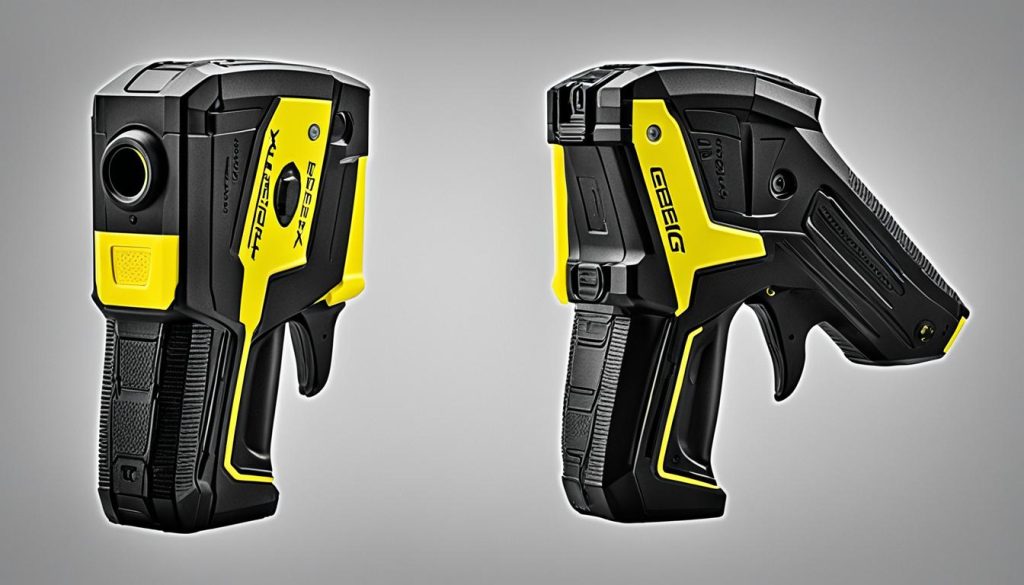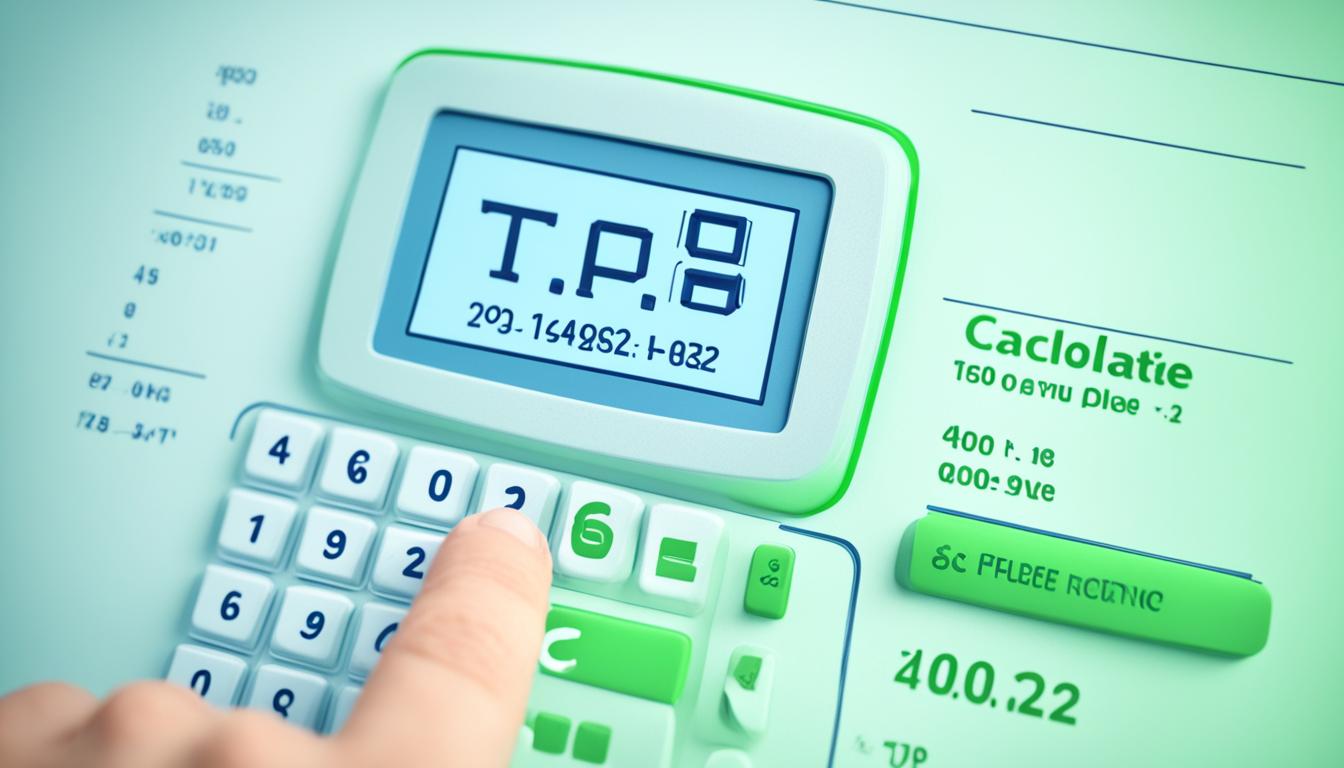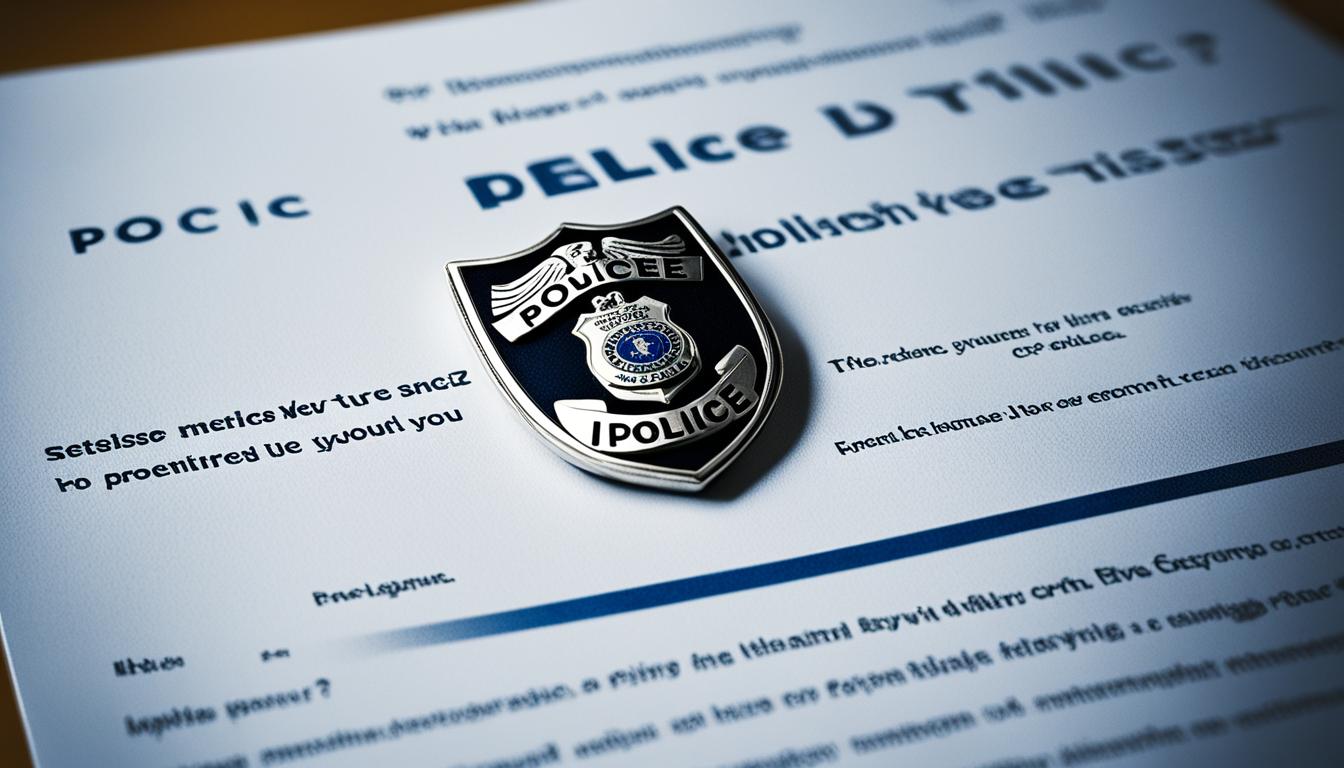Police Taser Voltage: Know the Shocking Facts
Did you know that the voltage delivered by a police Taser can reach up to 50,000 volts? It’s a staggering number that may leave you wondering about the potential impact of such a high voltage on a person’s body.
Key Takeaways:
- Police Tasers deliver a jolt of electricity through two small probes.
- The voltage delivered by a Taser is often quoted as up to 50,000 volts.
- Voltage is the force driving the flow of electrons, while current is the rate of flow of electrons.
- Tasers typically operate with a peak voltage of 50 kilovolts and a current of 1.9 milliamps.
- The actual impact of the electrical current can vary depending on the mode of use and connectivity of the probes.
Types of Tasers used by Law Enforcement Agencies
When it comes to law enforcement agencies, Taser International based in Arizona is the go-to manufacturer for stun guns. They produce a variety of Tasers that are used by police forces worldwide. Let’s take a closer look at some of the most popular models:
- Taser X26: This model is one of the most widely used Tasers by law enforcement agencies. It delivers a powerful electric shock that incapacitates suspects, making it easier for officers to apprehend them.
- Taser X3: The Taser X3 is an advanced model that offers increased power and multiple shot capabilities. It is designed to provide law enforcement officers with a reliable and effective tool for subduing suspects.
- Taser X2: The Taser X2 is a compact and lightweight model that is easy to handle and carry. It offers similar functionality to the other models but in a more portable package.
- Taser XREP: The Taser XREP, also known as Extended Range Electronic Projectile, is a unique Taser that can be fired from a 12-gauge shotgun. It delivers a shock to the individual it comes into contact with, allowing officers to subdue suspects from a distance.

These Tasers are designed to give law enforcement officers a non-lethal option for controlling potentially dangerous situations. They provide a way to immobilize individuals without causing serious harm or injury. The effectiveness and reliability of these Tasers have made them an essential tool in the arsenal of law enforcement agencies.
Next, we will explore the benefits and drawbacks of stun guns in law enforcement, weighing the advantages they bring against the criticisms and concerns that have been raised. Stick around to learn more!
Benefits and Drawbacks of Stun Guns in Law Enforcement
Stun guns, such as Tasers, provide law enforcement officers with a non-lethal alternative for subduing violent individuals, offering several benefits:
- Non-lethal force: Stun guns incapacitate suspects without the risk of bullets causing harm to innocent bystanders.
- Reduced need for lethal force: Stun guns have been credited with saving lives by effectively subduing individuals in potentially dangerous situations, decreasing the necessity for more lethal force options.
However, it is important to acknowledge the drawbacks and criticisms associated with the use of stun guns in law enforcement:
- Limited research: Critics argue that there hasn’t been enough scientific research into the long-term effects and safety of stun guns, raising concerns about potential health risks.
- Inconsistencies in effectiveness: Testing of Taser devices has revealed variations in their effectiveness, with factors like distance and probe placement impacting their ability to incapacitate effectively.
- Misuse and abuse: There have been instances where stun guns have been misused or abused by law enforcement personnel, leading to unnecessary injury or death.
While stun guns offer significant advantages in terms of non-lethality and potentially life-saving interventions, it is crucial for law enforcement agencies to address the drawbacks and criticism surrounding their use through continued research, training, and accountability measures.

Legal and Regulatory Considerations Surrounding Tasers
The legality and regulations surrounding the use of Tasers vary by country and jurisdiction. In the United States, Tasers are not considered firearms and are legal for civilian use in most states. However, it’s important to note that some cities, counties, and states may have restrictions or even bans on their use by non-law enforcement individuals. It’s essential to familiarize yourself with the specific regulations in your area before considering the use of a Taser for personal protection.
In Canada, on the other hand, Tasers are classified as prohibited weapons. This means that their possession and use are strictly limited. Only one company is permitted to import Tasers into Canada under a special permit, and they can only be sold to law enforcement agencies. Each Taser sale is registered and tracked, similar to a handgun. This level of control ensures that Tasers are only used by trained professionals in specific situations where their deployment is deemed necessary.
The legality and regulations surrounding Tasers in Canada:
Prohibited Weapon Classification
Only one authorized importer of Tasers
Sales restricted to law enforcement agencies
Registration and tracking requirements
The legality and regulations surrounding Tasers in the United States:
Not considered firearms
Legal for civilian use in most states
Possible restrictions or bans at the city, county, or state level
It’s crucial to note that the information provided here is a general overview. The legality and regulations surrounding Tasers can change, so it’s essential to consult local laws and authorities for the most up-to-date information.
| Country | Legal Status | Sale and Possession Regulations |
|---|---|---|
| Canada | Prohibited Weapons | Restricted to law enforcement agencies |
| United States | Not considered firearms | Legal for civilian use in most states, with possible restrictions or bans at local levels |
Controversies and Criticisms Surrounding Taser Use
The use of Tasers has been a subject of intense scrutiny and debate, with numerous controversies and criticisms surrounding their effectiveness and safety. Amnesty International has reported several Taser-related deaths, raising concerns about the lethal potential of these devices. Allegations of misuse and excessive use of Tasers by law enforcement personnel have also surfaced, further fueling the controversy.
One specific point of contention is the use of Tasers on minors and individuals with mental illnesses. Critics argue that electroshock weapons should not be used on vulnerable populations, as there is an increased risk of serious injury or even death. These incidents have highlighted the need for more comprehensive guidelines and training for law enforcement when dealing with individuals in fragile mental states.
Taser safety has also come under fire, with critics claiming that the devices are not as safe as they are advertised. Concerns have been raised about the potential for misuse, as improper or prolonged applications of electric shocks can have severe consequences. Additionally, there have been instances where Tasers have been used disproportionately against minorities, prompting concerns about racial bias in law enforcement practices.
Given these controversies and criticisms, calls for stricter regulations and limitations on the use of Tasers have emerged. Many advocates argue that the risks associated with Taser use outweigh the potential benefits, and governments should consider suspending their use altogether or implementing stricter oversight measures to prevent misuse. As the debate continues, it is essential to find a balance between ensuring public safety and addressing the concerns surrounding the use of Tasers in law enforcement.
- Canada Arrest Protocol: What Police Say Upon Arrest - June 12, 2025
- Can Police Disclose Who Reported You? Find Out Here - June 6, 2025
- 2025 Window Rebates Ontario: How to Save Money While Replacing Windows and Doors - April 24, 2025




















Post Comment